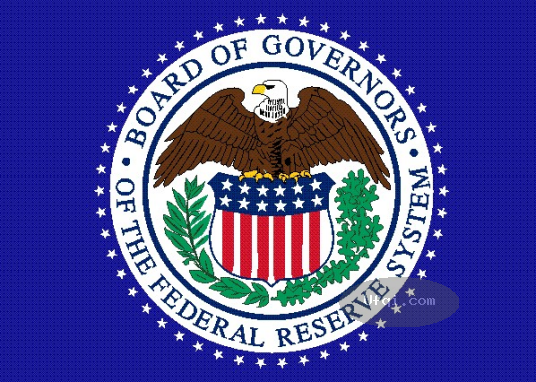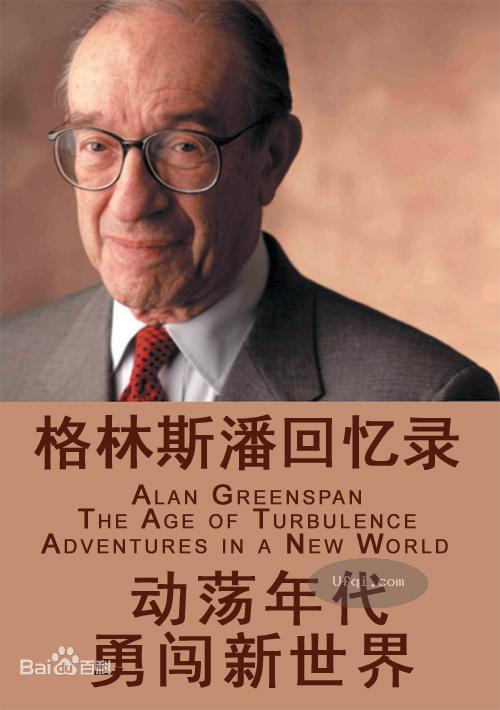


2023-05-07 , 8728 , 104 , 144
美国联邦储备委员会主席艾伦格林斯潘回忆录——动荡年代:勇闯新世界-the age of turbulence-31
BLACK MONDAY
Others took advantage of the loosened rules to commit fraud—most notoriously Charles Keating, a West Coast entrepreneur who was ultimately sent to prison for racketeering and fraud for having misled investors through sham real estate transactions and the sale of worthless junk bonds.
Salesmen at Keating's Lincoln Savings were also said to have talked unsophisticated people into shifting their savings from passbook accounts into risky,
uninsured ventures controlled by him. When the business collapsed, cleaning up the mess cost taxpayers $3.4 billion, and as many as twenty-five thousand bond buyers lost an estimated $250 million.
The revelation in 1990 that Keating and other S&L executives were major contributors to Senate campaigns made for a full-blown Washington drama.
I had a complicated involvement in this mess not only because of my job but also because of a study I'd done while still a private consultant.
Years before, at Townsend-Greenspan, a major law firm representing Keating had hired me to evaluate whether Lincoln was financially healthy enough to be allowed to invest directly in real estate. I'd concluded that with its then highly liquid balance sheet, it could do so safely.
This was before Keating undertook dangerous increases in the leveraging of his balance sheet and long before he was exposed as a scoundrel.
To this day I don't know whether he'd started committing crimes by the time I began my research.
My report surfaced when the Senate Ethics Committee opened hearings into Keating's connections to five senators, who came to be known as the Keating Five. John McCain, one of those being investigated, testified that my assessment had helped reassure him about Keating. I told the New York Times that I was embarrassed by my failure to foresee what the company would do, and added,
"I was wrong about Lincoln."
The incident was doubly painful for me because it caused trouble for Andrea. By this time she had become her network's chief congressional correspondent, and she was covering the Keating scandal. Andrea had always taken extreme care to keep what she called a firewall between my work and hers as our relationship deepened. For example, she never attended any of my congressional testimonies; she strove to avoid even the appearance of a conflict of interest. The Keating hearings put this to the test.
Reluctantly, Andrea decided to take herself off the story while the news media explored my connection to the case.
115
No one knew how much the final cleanup of the thrift industry would cost taxpayers—the estimates were in the hundreds of billions of dollars.
As the work proceeded, the drain on the Treasury was perceptible, worsening the fiscal challenge for President Bush. The job of trying to recoup some of the losses fell to the Resolution Trust Corporation, which Congress had created in 1989 to sell off the assets of the ruined companies.



I was on its oversight board, which was chaired by Treasury Secretary Brady and included Jack Kemp, then the secretary of housing and urban development;
real estate developer Robert Larson; and former Fed governor Philip Jackson.
The RTC had a professional staff, but for me by early 1991 being on the oversight board was almost like having a second job. I spent large amounts of time poring over detailed documents and attending meetings.
The vast numbers of uninhabited properties we managed were deteriorating rapidly from lack of maintenance, and unless we moved quickly to get rid of them, we would end up with one huge write-off. Moreover, we would probably have been saddled with a bill to tear a lot of them down. I kept adding up the cost in my mind. It was not a pretty thought.
S&L mortgages that were still paying interest had sold off readily in the market. But now the RTC had gotten down to the assets nobody seemed to want: half-built malls in the desert, marinas, golf courses, tacky new condo complexes in overbuilt residential markets, repossessed half-empty office buildings, uranium mines. The scope of the problem beggared the imagination:
Bill Seidman, who chaired both the RTC and the Federal Deposit Insurance Corporation, calculated that if the RTC sold off $1 million of assets a day, it would need three hundred years to sell them all. Clearly, we needed a different approach.
I'm not sure who came up with the creative sales idea. As we finally presented it, the plan was to group the properties into $ 1 billion blocks. For the first package, which we offered at auction, we especially solicited the bids of a few dozen qualified buyers, mostly businesses with track records of turning around sick properties. "Qualified" doesn't necessarily mean "savory"—the groups we approached included so-called vulture funds and speculators whose reputations could have used a face-lift.
116
BLACK MONDAY
Only a few bids materialized, and the package went for a comparative song—just over $500 million. What's more, the winning bidder had to make a down payment of only a fraction of the price, and then pay installments based on how much cash the properties generated.
The deal looked like a giveaway, and as we'd expected, public watchdogs and Congress were outraged. But there's nothing like a bargain to stimulate demand.
Large numbers of greedy investors rushed to get in on the action, the prices of the
remaining blocks of property soared, and within a few months the RTC's shelves were stripped bare. By the time it disbanded in 1995, the RTC had liquidated 744 S&Ls—more than a quarter of the industry. But thanks in part to the asset sales, the total bill to taxpayers was $87 billion, far less than originally feared.
Commercial banks also were in serious trouble. This was an even bigger headache than the S&Ls because banks represent a far larger and more important sector of the economy. The late 1980s was their worst period since the Depression; hundreds of small and medium-size banks failed, and giants like Citibank and Chase Manhattan were in distress. Their problem, as with the S&Ls, was too much speculative lending: in the early eighties, the major banks had gambled on Latin American debt, and then, as those loans went bad, like amateur gamblers trying to get square they'd bet even more by leading the whole industry into a binge of commercial real estate lending.
The inevitable collapse of the real estate boom really shook the banks.



UfqiLong
Uncertainty about the value of the real estate collateral securing their loans made bankers unsure how much capital they actually had—leaving many of them paralyzed, frightened, and reluctant to lend further. Big businesses were able to tap other sources of funds, such as innovative debt markets that had sprung up on Wall Street—a phenomenon that helped keep the 1990 recession shallow. But small and midsize manufacturers and merchants all over America were finding it hard to get even routine business loans approved. And that, in turn, made the recession unusually difficult to snap out of.
117
Nothing we did at the Fed seemed to work. We'd begun easing interest rates well before the recession hit, but the economy had stopped responding.
Even though we lowered the fed funds rate no fewer than twenty-three times in the three-year period between July 1989 and July 1992, the recovery was one of the most sluggish on record. "The U.S. economy is best described as moving forward, but in the teeth of a fifty-mile-an-hour headwind" was how I explained the situation to an audience of worried New England businessmen in October 1991.1 couldn't be very encouraging, because I didn't know when the credit crunch would end.
I would see President Bush every six or seven weeks, usually in the context of a meeting with others but sometimes one-on-one. We had known each other since the Ford years. He'd even had me over to Langley for lunch when he was director of Central Intelligence in 1976.
During the early months of the 1980 campaign, he often called me on economic policy issues. While Bush was vice president, I would join him every so often at
the White House. He was intelligent and in person we always got along well. I was particularly taken with his wife, Barbara, a spunky and formidable presence. But during his presidency, he was far less focused on the economy than on foreign affairs.
Though his father had worked on Wall Street and he'd majored in economics at Yale, he had never experienced the markets firsthand. He didn't think of interest rates as being set mainly by market forces; he seemed to believe that they were matters of preference. It was not a thoughtful view.
He preferred to delegate economic policy to his top aides. This meant that I dealt mainly with Nick Brady, Dick Darman, and Mike Boskin.
Darman, the budget director, was in many ways similar to David Stockman—
a major-league policy intellectual and a believer in sound fiscal management.
Unlike Stockman, though, Dick was often less than direct with people and was more driven by political expediency. Over time I learned to keep my distance.
Darman wrote years later that behind closed doors at the White House,
he'd strenuously opposed keeping the no-new-taxes pledge. Instead he tried to persuade the president to attack the deficit early on, when they might have put the issue quickly behind them. But the president wasn't convinced.
As 1989 progressed, the White House found itself at loggerheads with the Democratic Congress. So much debt continued to hang over the budget that when the recession came, the administration didn't have the fiscal flexibility to address it.
118
(未完待续, To be contd)



🔗 连载目录
🤖 智能推荐









